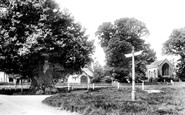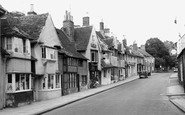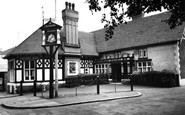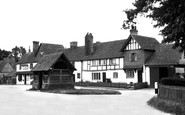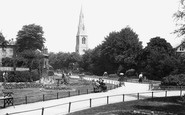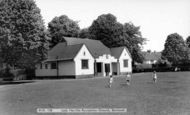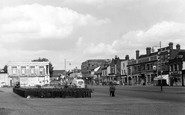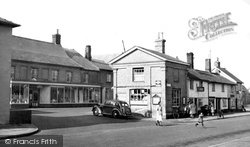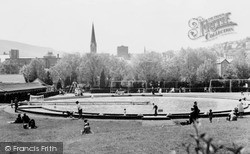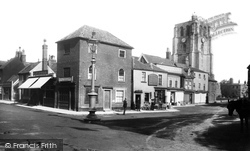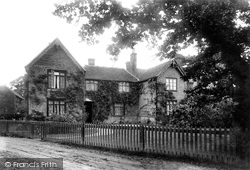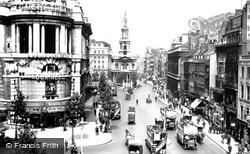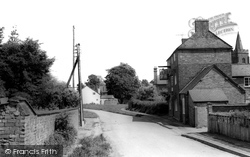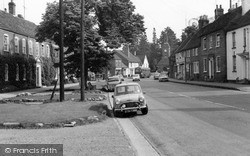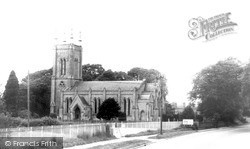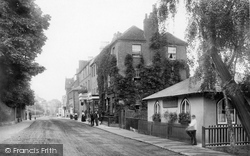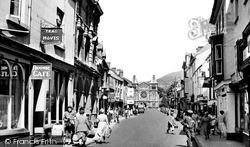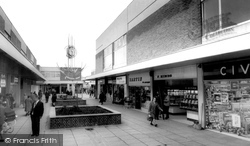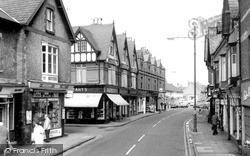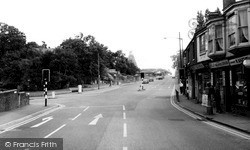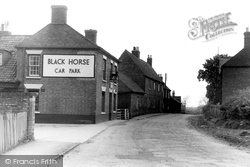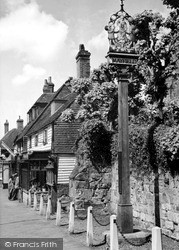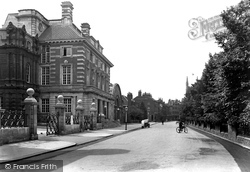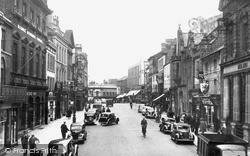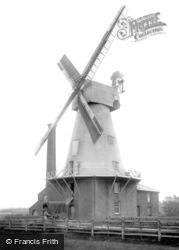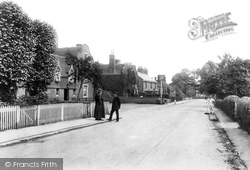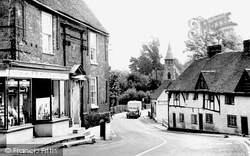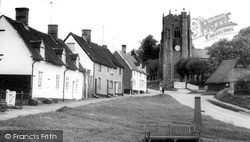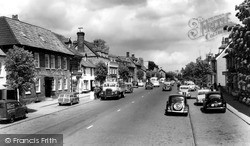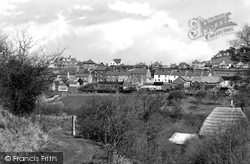Places
Sorry, no places were found that related to your search.
Photos
Sorry, no photos were found that related to your search.
Maps
Sorry, no maps were found that related to your search.
Books
Sorry, no books were found that related to your search.
Memories
655 memories found. Showing results 111 to 120.
The Bricked Up Tree On The Green.
I was born at "Elmwood" in the village in 1941 and remember the tree on the corner, the 175 bus used to give it a wide berth to get round the corner. It was a huge tree with bricks inside to hold it together. ...Read more
A memory of Havering-atte-Bower by
The Barber Shop
This photo was taken around 1960 as my father (who can be seen in the photo, cleaning the bedroom window) bought number 11, St Paul's Street in 1958 and did not open the barber shop for over a year. I was 5 years old when we moved in ...Read more
A memory of Stamford in 1960 by
The Ye Olde Chetwode Arms
Very happy memories of this building, the publicans Arthur and Sarah Myerscough were my aunt and uncle. I lived there for a number of years then moved into Broad Street . The cellars were a delight, arched ceilings all in old ...Read more
A memory of Crewe in 1954 by
The Wrong Guy
There at the time when Cawthorne was a tour operator and whether it was coincidence or not the tour operator was called Harry Cawthorne coach tours. I do believe that they were an established firm; it could well be that the village was ...Read more
A memory of Gawber in 1952 by
The Well House
This was where everyone waited for the buses that took us east to Pangbourne and Reading or west to Newbury, our main shopping town. Newbury had a thriving market twice a week and buses were frequent, eight per day. The Well House ...Read more
A memory of Yattendon by
The Wartime Liverpool Evacuees
William Manning was allocated to us in Church Street. On the day of his arrival he climbed onto the rear of the stone pier and watched the waves breaking against the stones, became dizzy and fell in. He was rescued just ...Read more
A memory of New Quay in 1940 by
The War Years
I was always in the Penge Recreation during the war, not only to play but I used to cut through from one end of the Rec, as we used to call it, to the other end coming out of the gates opposite St John's Church, where you can see the ...Read more
A memory of Penge by
The War Memorial Banstead
The 164a bus used to go behind the war memorial on its return journey to Tattenham corner, and if you were sitting upstairs you could view the lovely house and garden behind the brick wall. On the way to Morden on the outward ...Read more
A memory of Banstead by
The Vogue Cinema
Yes I remember it well, always showed B movies and you were lucky if you saw the complete film without the projector breaking down, when it did there were boos and shouts from the audience. Also the carpets were loose and you took ...Read more
A memory of Romford in 1955 by
The Village
I moved to Borehamwood from Acton, North West London, when I was three years old. I spent my childhood there, scrumping in neighbours gardens, getting the greenline bus into London for trips to Selfridges at Christmas, to London Zoo ...Read more
A memory of Borehamwood in 1961 by
Captions
405 captions found. Showing results 265 to 288.
The wide shop on the left belongs to Henry Abbot, the long-established draper's, which became a Co-op in the late 1990s. Each alternate window on the first floor, has been blocked.
A final view of the Park with plenty of activity around the paddling pool, but with no one in it.
The tall brick building was Thomas Self, greengrocer and market gardener; to the left was Clement Poll, butcher.
The fine old farmhouse sits on a brick base and is hung with tiles and swathed in creeper.
The Gaiety Theatre dominates the corner where the Aldwych breaks off from the Strand.
The camera looks north towards the large green; on its right is the three- storey early 19th- century red brick Royal Oak pub.
We have moved nearer the High Street junction.
The parish church lies east of the Almshouses, which can be seen beyond the chancel.
The camera looks north towards the large green; on its right is the three- storey early 19th- century red brick Royal Oak pub.
Sunbury-on-Thames was only incorporated into Surrey in the administrative changes which took place in 1965, but the village dates back to Anglo-Saxon times.
The Frogmore Café (left) offered busy shoppers a break until 1969, when it was taken over by Sketchleys the cleaners.
Typifying the sixties town planning dream here, Broad Walk presents a range of shops away from the hazard and pollution of the motor car.
This scene, looking north along Banks Road from the corner of Eaton Road, has changed very little in recent years. There is still a newsagents on the corner with Alexandra Road on the left.
This picture gives a tantalising glimpse of the wonderful Red House Cone, which belongs to Stuart & Sons, makers of crystal glass.
In a not unattractive red brick, end-of-village group, it is impossible not to notice the Black Horse pub, with its well- mannered frontage and attractive pantiled roofs.
High Street c1955 Mayfield's attractive High Street, with its raised brick pavements and fine architec- ture, speaks of the days when Mayfield was an important iron town.
The ball-finialled gate piers belong to the Crown Court's forecourt, a sedate Italianate stone building somewhat dwarfed by Hall and Warwick's confident Shire Hall built for the County Council.
The Golden Lion pub on the right had its earliest licence in 1684, became subdivided into shops but reverted to an inn again by 1740.
Here we see a fine example of a white weatherboarded Kentish smock mill with a two-storey square brick base and wooden staging for access to the sails.
Here we see some fine brick houses, some with decorative bargeboards and Flemish-style gables.
Bridge Street curves down to the river. A variety of architecture is to be enjoyed here, from red brick houses to timber-framed cottages.
In this view the church seems to close the end of the village green. The three groups of cottages are timber-framed and date from the 17th and 18th centuries.
The wide High Street extends for about half a mile. On the left stands the Angel Hotel of chequered brick, which dates from the 18th century. The hotel was later completely modernized in 1989.
The village street at Bothenhampton (middle distance, left to right), with suburbia beyond, seen from the vicinity of Quarry Farm with an apple orchard and thatched cottages above
Places (0)
Photos (0)
Memories (655)
Books (0)
Maps (0)



